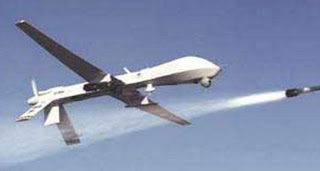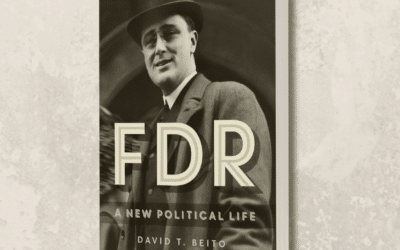On May 24, 2022, eighteen-year-old Salvador Rolando Ramos murdered twenty-one people, including nineteen young children, at Robb Elementary School in Uvalde, Texas. The horror of what unfolded over the course of seventy-five minutes is blamed by activists on the fact that guns are readily available to miscreants. But the guns held by the local police were not used to stop the killer until he had already committed mass murder. Parents at the scene of the crime have reported that when they rallied for the police to storm the building, they were accused of interfering with a security operation underway. (One mother was even handcuffed.) Lieutenant Chris Olivarez, of the Texas Department of Public Safety, explained in an interview that the officers took so long to enter the building because “they could’ve been shot, they could’ve been killed.”
That officers of the law proved unwilling to penetrate a building in which an armed person was killing completely defenseless children may on its face seem inexplicable. Policemen, like soldiers, are supposed to be brave and courageous human beings who risk their lives to save their fellow citizens—or so the story goes. The reality is quite different, as we know from not only what happened in Uvalde but also the many unarmed civilians killed by the police in recent years. The long list of nonthreatening persons whose lives have been terminated by officers of the law reveals that personal risk is now minimized and lethality maximized by police in the homeland, mirroring the modus operandi of the modern military in wielding deadly force abroad.
As technology has advanced over the past fifty years, the icon of the “courageous warrior” has been pared down to a mere shadow of what he once was. Today’s leaders needless to say do not fight in the wars which they wage, but with the advent of remote-control killing technology, soldiers, too, are able to kill without risking physical harm to themselves. In this new Drone Age, politicians have manifested a correspondingly greater willingness to wage and prolong wars, because the risk of compatriot deaths no longer serves as a serious deterrent. Military administrators have long sought to increase the lethality of their forces, and risk aversion, ironically enough, has done just that.
It is rational to avoid acting in ways which imperil one’s self, and if a danger can be defused without jeopardizing other persons, then that should be done. The problem with the military’s risk averse practices is that they endanger other, entirely innocent people, who had no say whatsoever in the plans drawn up for intervention abroad in what are claimed to be dire circumstances necessitating the application of military force.
Consider the 1999 NATO bombing of Kosovo. This mission preceded the Drone Age, so the planes used to carry out bombing raids were manned by human beings in the cockpits. U.S. ground troops were not deployed at all, and the bomber pilots were ordered to fly high above their targets. The result, from the warmakers’ perspective, was excellent: not a single U.S. soldier died during the seventy-eight-day bombing campaign. It is arguable, however, that more civilians died as a result of the increased risk to persons on the ground of dropping bombs from such a high altitude, which introduced a greater probability of error. The NATO intervention in fact intensified the fighting among the rival factions, with the result that more civilians died after the bombing campaign commenced than before.
The bombing of Kosovo was billed by its promoters as “humanitarian” in nature: a matter of not advancing the interests of the member states of NATO but rather protecting the helpless ethnic Albanians from the Serb forces led by Slobodan Milosevic. Fiascoes such as the bombing of the Chinese embassy in Belgrade on May 7, 1999 (the CIA had provided the grid coordinates), and a deadly attack on a large convoy of refugees attempting to seek safe haven abroad on April 14, 1999, were two of the many negative consequences caused directly by NATO and for which the Serbs could not in any reasonable sense be blamed. The NATO “rescuers” also deployed munitions (including depleted uranium-tipped missiles) which proved harmful to the persons exposed to them, causing a marked increase in the incidence of cancer and birth defects.
The orthodox view on noncombatant immunity—that civilians should not be harmed in the crossfire of battles between rival armies—thus gave way in 1999 to the idea that soldiers should not be sacrificed in achieving military and political aims. That norm has been further strengthened throughout the twenty-first century, with President Barack Obama adopting the mantra “No boots on the ground!” as he expanded the war on terror to Libya, which was left in shambles by the 2011 NATO intervention.
Obama also revved up the drone killing machine, and succeeded in normalizing assassination by rebranding it as “targeted killing” and defining all military-age males eliminated as Enemies Killed In Action (EKIA). The suspects killed were never provided the opportunity to defend themselves against the charge that they were guilty of possible future terrorist acts, and all of them, including U.S. citizens, were essentially convicted in the public eye through state execution, thanks to the government-infiltrated mainstream media’s propensity to parrot whatever the military claims about its own acts of homicide.
As the use of computer technology has come to dominate military operations in recent years, in both observing and firing upon targets, the notion of noncombatant immunity is rarely even mentioned anymore. Not only are no U.S. soldiers physically endangered by pushing buttons from trailers in Nevada to kill people living in the remote tribal regions of countries such as Pakistan and Yemen, but there are not even any troops on the ground to serve as the pretext for firing missiles on those people’s civil societies. In such “areas outside active hostilities,” the only persons endangered by drone strikes are the people on the ground—men, women, and children, most of whom are not even suspected of complicity in terrorism, yet all of whom are terrorized by the lethal drones hovering over their heads.
The tenacity of “just war” rhetoric aside, deadly force is no longer a last but the first resort in addressing international conflict, not only at the microlevel, in drone strikes, but also at the macrolevel. The refusal of President Biden and Secretary of State Blinken to pursue a diplomatic solution to the Ukraine-Russia conflict, and the U.S. government’s injection of massive quantities of weapons into the region, is the latest case in point. U.S. citizens have become inured to the acts of killing carried out directly or aided and abetted by the government, because military homicide has been effectively fictionalized by the propaganda wing of the Pentagon. The slaughter of innocent people abroad in missions fully funded by taxpayers is usually not mentioned at all. When it becomes undeniable, bland euphemisms such as “collateral damage” are deployed to excuse the commission of what are characterized as well-intended mistakes.
The proverbial “fog of war” continues to be invoked by military spokespersons to excuse even the summary execution by lethal drones of specific persons in the bright light of day on the basis of “evidence” which would never be admitted in a court of law, as in the ghastly August 29, 2021, drone strike which terminated the lives of ten civilians in Kabul, Afghanistan. Rather than taking the killers to task, and demanding that those involved in setting rules of engagement for the use of lethal drones reassess their procedures and norms in order to avoid the incineration of groups of innocent people in the future, the U.S. congress, having been propagandized to believe that such mistakes are completely normal and acceptable, intrinsic to national defense, awarded the Pentagon with yet another of its customarily generous annual budget increases.
The ability to kill while minimizing compatriot combatant deaths has naturally been welcomed by politicians, who rubber stamp each new National Defense Authorization Act, enthusiastically waving their flags in support of the nation, when in fact the beneficiaries of this largesse are only the military and its associated subcontractor companies. The corporate welfare enjoyed by firms in the government-sponsored intentional, premeditated killing business is unrivaled by that in any other sector, not only because many lawmakers have been coopted by military industry lobbyists and have stock holdings in defense companies, but also because of the persistence of a cluster of misconceptions regarding warfare.
In cases where groups of innocent people are slaughtered by the military, as happened many times throughout the war on terror, the interpretive charity accorded to the killers by media pundits and the policymakers they now represent continues to be based on older, outdated understandings of protocol. There was a time when strict obedience to the chain of command was required in order not to squander troops’ lives needlessly, the governing precept being: kill or be killed. But in the Drone Age, with fewer and fewer soldiers’ lives on the line, the local inhabitants of the land attacked pay the price for military mistakes made. The risk of death has not been diminished, much less eliminated, from modern warfare but rather transferred from those who wield deadly weapons to civilians themselves.
There is no sense in which warmakers exhibit courage in shipping weapons abroad or sending drones out to terrorize, maim, and incinerate poor people located thousands of miles away. The apocryphal image of heroic leaders and courageous soldiers persists only because it is replete with propaganda power, and the death industry has become the most lucrative of modern entrepreneurial undertakings. The delusive notion that war supporters are admirable patriots, while war critics and dissenters are despicable cowards or traitors, continues to be used to galvanize support for massive allocations of deadly weapons to be used in conflicts abroad (as in Ukraine) in the name of abstractions such as democracy and peace, despite the fact that war is the most tyrannical of means, shutting off entirely as it does the possibility for rational debate and negotiated solutions to conflict.
Thanks to the thousands of war marketeers deployed by the Pentagon—funded by citizens to persuade citizens themselves that war is everywhere and always necessary—people generally believe not only that warmakers and those who support them are praiseworthy but also that dropping bombs on other people located thousands of miles away constitutes a form of national defense. Politicians and their press attachés focus always on the supposed disasters of the future to ensue should “bold action” not be pursued. Meanwhile the manifold failures of the past, even in recent history, such as Afghanistan, which was finally restored to the Taliban after twenty feckless years of U.S. occupation and billions of dollars squandered, are ignored.
The fact that people were surprised by what happened in Uvalde illustrates how the fable of the courageous “protectors” of the people continues to hold sway. In reality, what the police did in Uvalde reflects precisely the risk aversion on display whenever unarmed persons are executed point blank by trigger-ready officers of the law. In case after case, policemen have terminated the lives of persons mistakenly believed to be dangerous, adopting the very “shoot first, ask questions later” approach which characterized the killing in Iraq of possibly dangerous persons by U.S. troops at checkpoints.
The norm governing the drone program, in which thousands of suspects have been executed in their own civil societies on the basis of purely circumstantial evidence that they might at some unknown point in the future carry out terrorist plots, is precisely the same. The aim of the killers in all such cases has been to eliminate the suspects rather than incapacitate them, again, as a means of minimizing risk to the killers themselves.
Risk aversion and lethality go hand in hand because the surest way to avoid danger to one’s self is to eliminate anyone who might possibly consider fighting back or dissenting in the future. This was the premise underlying the entire twenty-year killing spree known as the Global War on Terror. The invaders sought to annihilate anyone who might somehow, somewhere, some day, launch, or even inspire, an attack such as took place on September 11, 2001, assuming all along the way that the innocent people slain were the price which had to be paid.
The hesitation of some police officers to act (as in Uvalde) and the willingness of others to commit homicide at the slightest provocation reveal that the norms of the military have been absorbed by “security forces” in the homeland as well. Both cops who kill and cops who are cowards are concerned above all with minimizing risk to themselves. This quest to minimize risk has given rise to the widely embraced assumption laid bare by what happened in Uvalde: civilians are less worthy of protection than the agents of the state being paid to protect them.
Recall that throughout the Global War on Terror, crimes identified as such but committed by military personnel were ascribed to low-level grunts, “a few bad apples.” Meanwhile, the drone program, a sprawling apparatus of state-inflicted extrajudicial execution of suspects from a safe distance, cloaked in secrecy so as to ensure the killers’ own immunity, was largely ignored, with whistleblowers discredited and criminalized. These examples reveal that the military’s risk averse policies aim not to protect the troops but to prolong and expand wars. The same aim is served by the U.S. government’s ruthless persecution of Julian Assange, who exposed so many war crimes committed by the U.S. military throughout the war on terror.
The most effective way to ensure the perpetuation of war is to take soldiers out of harm’s way, thereby minimizing domestic resistance to military operations abroad. So long as the people killed are out of sight, they are for all intents and purposes nonexistent to the electorate. This very effective fictionalization of the consequences of war, and the silencing of dissidents who attempt to reveal the truth, make it possible for lawmakers to support any and every call for military aid, itself a deceptive euphemism for the mass transfer of implements of homicide to lands far away.
Just as only the low-level perpetrators, not the policy architects, were blamed and held responsible for the crimes committed at Abu Ghraib, it seems likely that the officers at Uvalde, too, will be written off as outliers. In truth, such officers have been molded by the very forces which incline policymakers to green-light the shipment of tons of deadly weapons abroad to be used as the eventual recipients see fit while simultaneously inveighing against mass shootings in the homeland, as though the lives of children located thousands of miles away were somehow less worthy of our moral concern.
With most politicians fully prepared to prioritize military funding above all else—not a single Democratic member of congress voted against the profligate “Print $40 billion for Ukraine” bill—the United States has been transformed into a de facto military state. The truly remarkable feat of propaganda on the part of the Pentagon has been to create portions of the populace (officers of the law) in its image while simultaneously, through the use of relentless pro-war marketing campaigns, keeping the lie alive that agents of the state are our protectors, no matter what they do.
































